I revisited Ranganathittu Bird Sanctuary after long 4 tears, it was a wounderful day of appeasement and observation. All associated with me already have an idea about my passion for photographing Crocodiles and the way I follow them in some places. I relived my same passion after 4 years.
Ranganathittu Bird Sanctuary is the place where I fell in love with crocodiles very early in life. The crocs have been with me for more time than my Civil engineering degree. I don’t not exactly remember how my passion for crocs developed.
The creature gives so much time to observe “just like models in the painting class” I kept observing them with some logical sense. I started questioning, how is one different from the other?
Then some science-based observations started. I started marking them and visited their places with repeating sightings.
Quite late into my involvement with them, I started observing their behaviour studies. The study included details on mating and area marking. Then came the offspring observation that included, marking them young and following them to their adolescent age and marking them for their breeding season.
I started travelling in an independent boat to have a detailed look and observation about crocodiles. I preferred sole companionship so that my hobby does not disturb others. Over the years I had only few companionship who joined me to observe crocodiles.
There are many places I have visited Crocks in the wild and also in captive.
I will start posting many photos that I have with stories that is related to pictures or the season that picture was taken….
For now, I am posting a few pictures that were taken on 07 January 2023. Ranganathittu Birds Sanctuary is a cluster of islands in the River Cauvery near Srirangapatna in the Mandya District of Karnataka State India. (Click for location on Google Maps). This is a place famous and known for migratory birds that come from far corners of the world. In the peak season, we could see some Exotic birds traveling across continents to build their nests and make their families there could be many who would visit often for the birds.
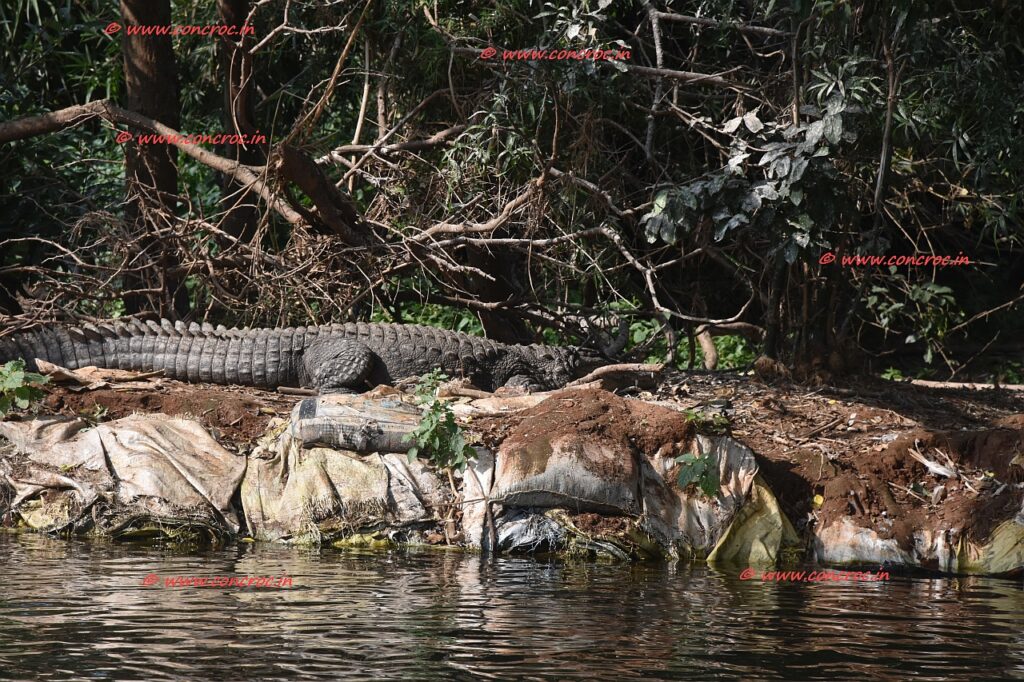
| Don’t be surprised to see the poly bags filled in sand and soil they have become very necessary to prevent the small islands from erosion. Ranganathittu losing its islands means it would lose the birds coming there – maybe crocs would go too! They need replacement before the monsoon. More about erosion and ecology in one of my next updates here. This Croc here is permanent on “this part of this Island” there is a land shortage as the population has grown. Young when compared to many here but strongly dominant in mating season fights. |
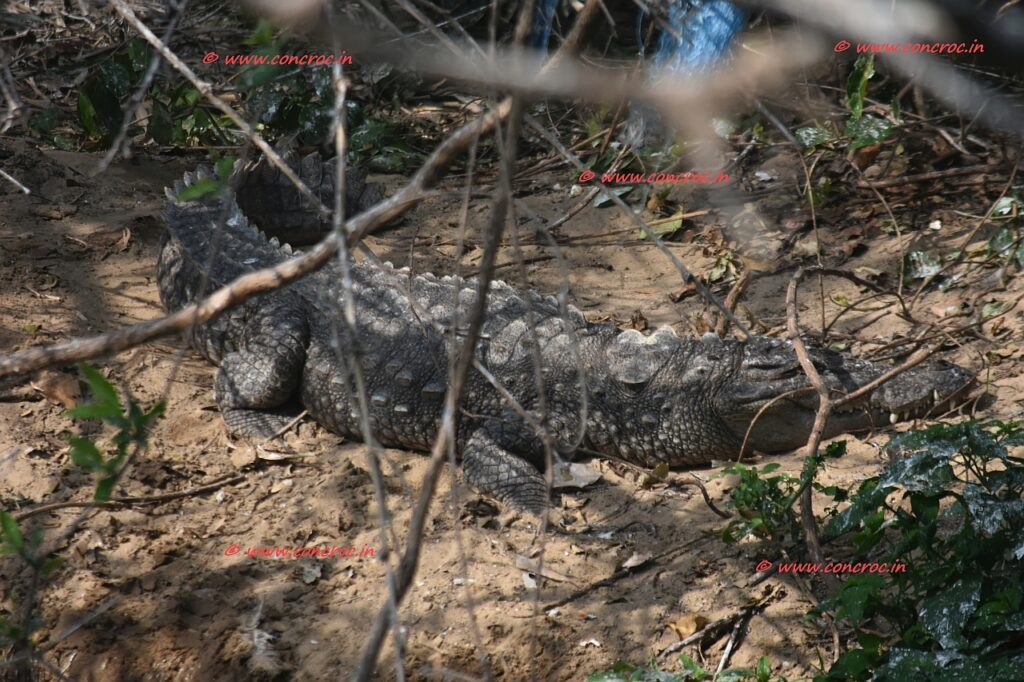
| This is female I have been seeing quite for atleast 10 years recognised to be rough ones as it has a ripped mark on the right shoulder. This day it looked like it had a good meal the bloated tummy says the stories. It has been on record here that the crocodiles have not been in conflict with humans even though some rare instances of dogs vanishing happens. The birds, fish and wild pigs make to the dining table of these crocs. |
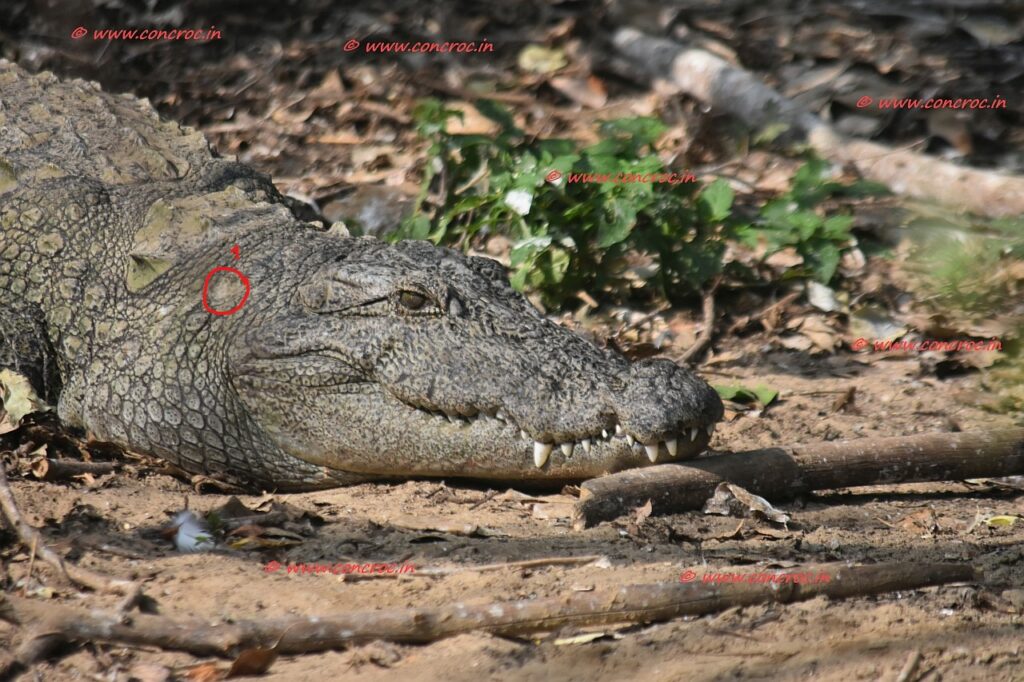
| The denture Set I call them so – with love How many of you know the crocs tend lose their teeth and regrow them more than 1 time (human lose & regrow teeth once) The red circle marking indicating the skin damage suffered in one of the fights for hierarchy or for real estate ownership. |
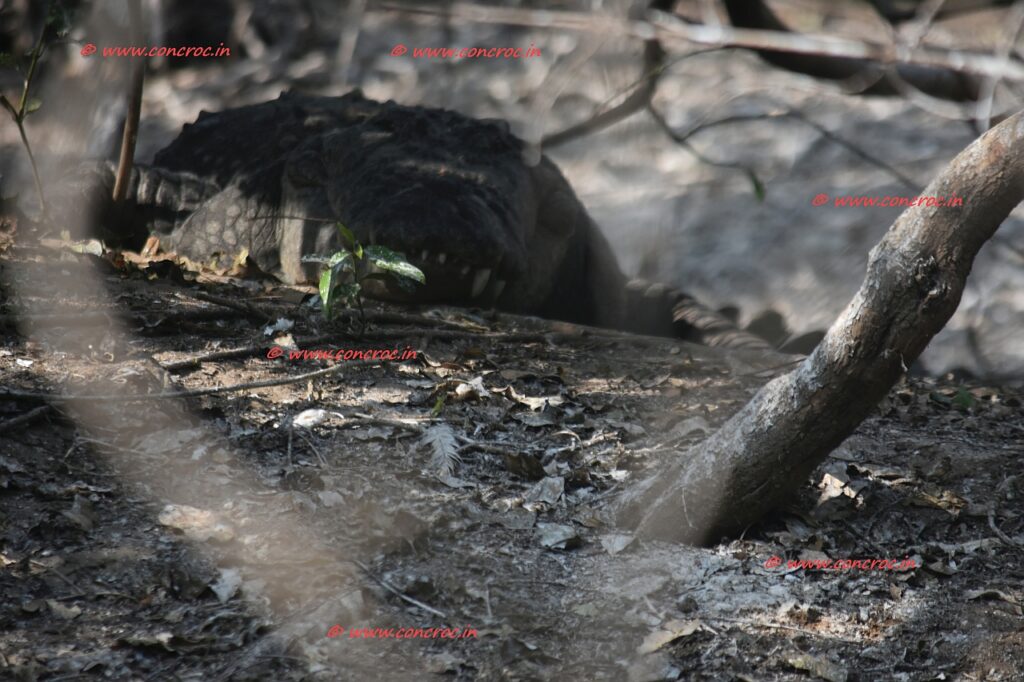
| The croc that I have followed the most years – 3 decades one of the oldest here in the Ranganathittu Birds Sanctuary. This should be more than 75 yrs old. It has a unique place in my home too I will write about it in some other Blog. |

| When we go here in the winter months we do get to see these painted storks couples breeding. Some ornithologists do recognise the birds that come often or how many times they have bred etc. I do capture them occasionally |
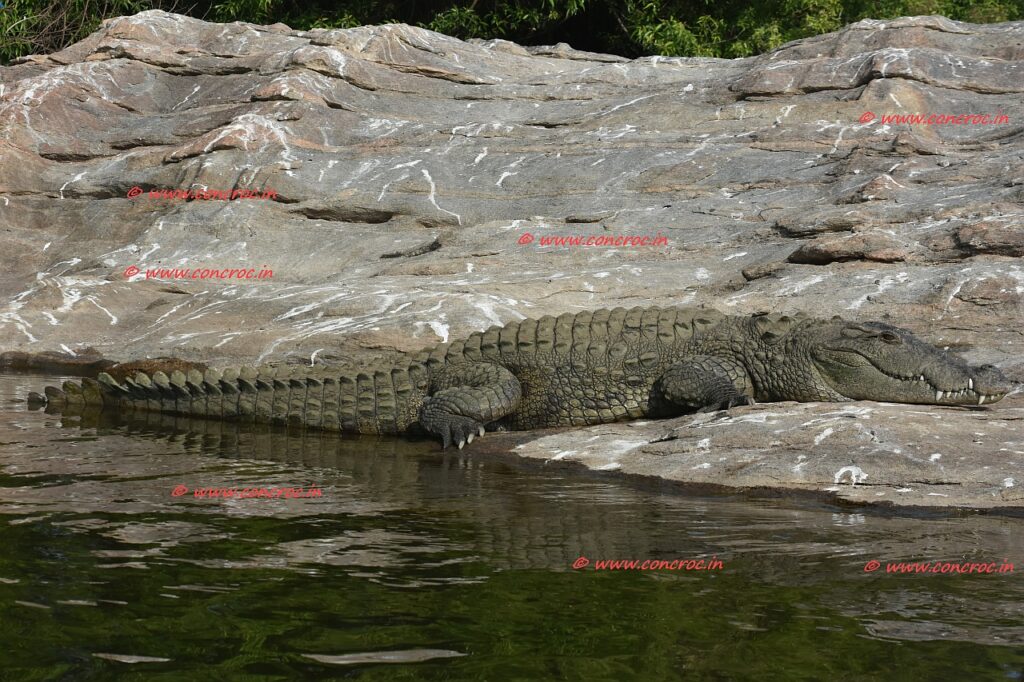
| Sometimes these juveniles do take a little more than they can afford… I cannot use the regular saying “bite more than chew” Crocodiles do not have a tongue, not they chew they bite and swallow. The chunks of meat take days to digest as they are cold-blooded they need the heat of the sun’s heat to digest food! I read somewhere that recent studies have found that prehistoric crocodile ancestors are warm-blooded. Scientists have discovered this fact by studying oxygen in fossilised teeth. There is a lot to know about these characters! |
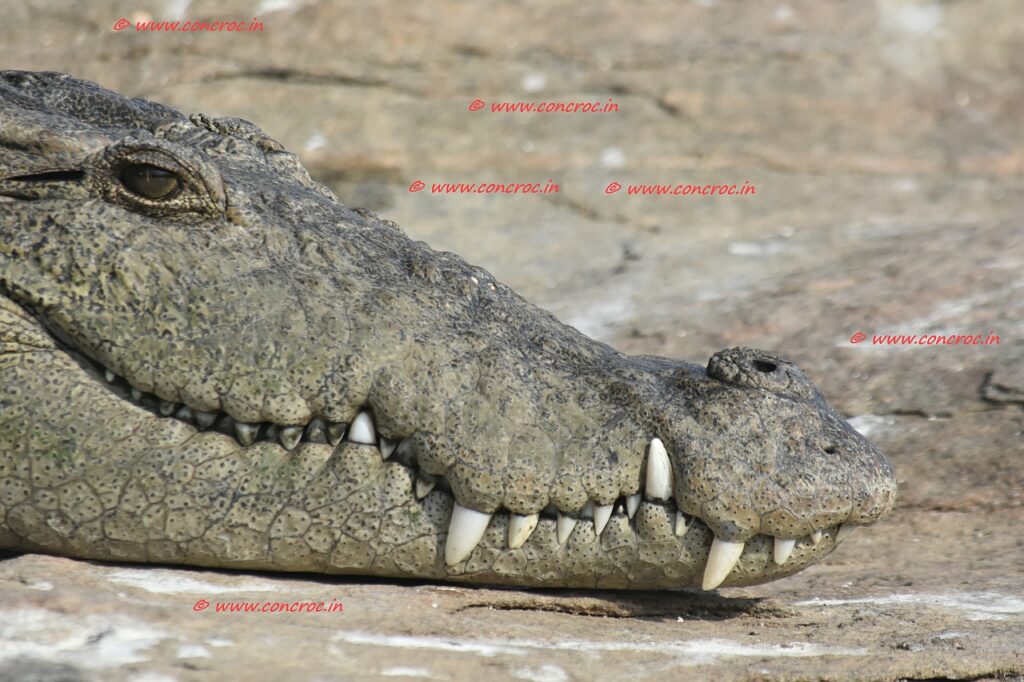
| These youngsters before they get the bulk around their necks will give a very beautiful view of the “zip-lock denture” The teeth from the upper and lower jaw will slip in between each other – they have only canine teeth not molar like as they don’t chew. |

| It’s no harm to watch these winged birds! Lovely to see these birds spread their wings to get their feathers dry, they look beautiful and so graceful when they turn around. |

| Sometimes the Crocs slip into the water and glide away from us slowly and go down into deeper water or the next island to have a peaceful time… That is a majestic swim that resembles the catwalk on the ramp! |
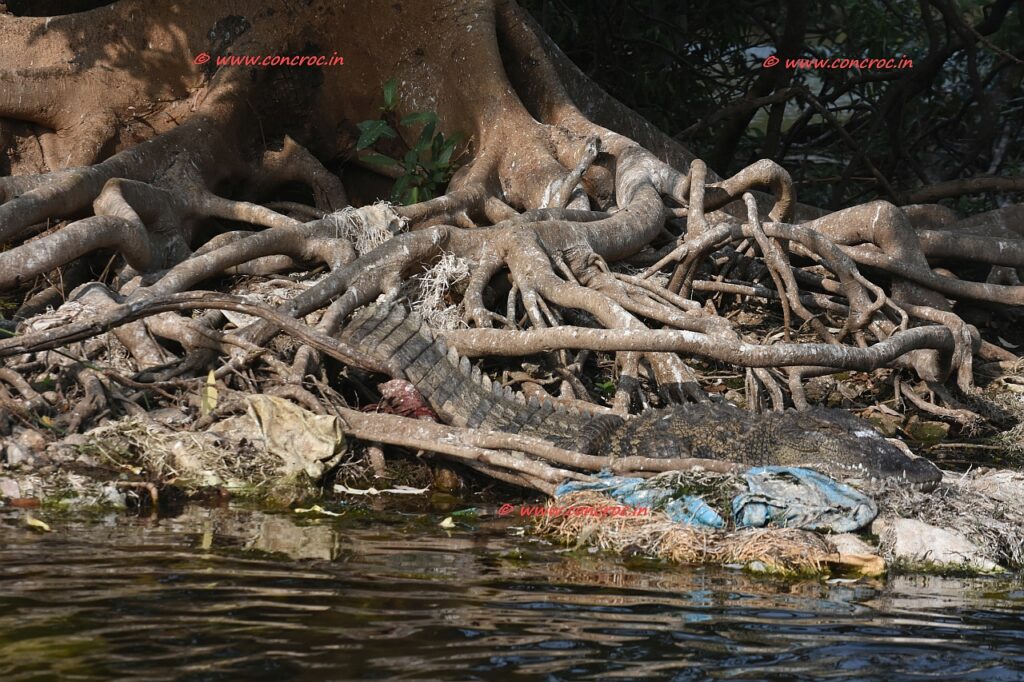
| One more of the juveniles probably the ones who could not get the prime position on the rock had to settle on the roots of the tree & the soil bag put up to prevent erosion. |

| This one is one of the ferocious fighters for real estate here and the females that come with it! It has one of the most powerful bites – in fact it has the couple of teeth from lower jaw that has penetrated throw upper jaw ! |

| The hind legs and their claws the marks on the skin many times these are critical to identify & differentiate them. For females, they are of good use to digging to lay eggs and close them! |
Crocodiles have not changed for nearly a million years they have adopted and survived many critical changes that have happened on this earth. I do mention in my lectures that Crocs are one of the best examples of sustainable living.
Watch out this space for more updates on my passion, crocodile photography.
